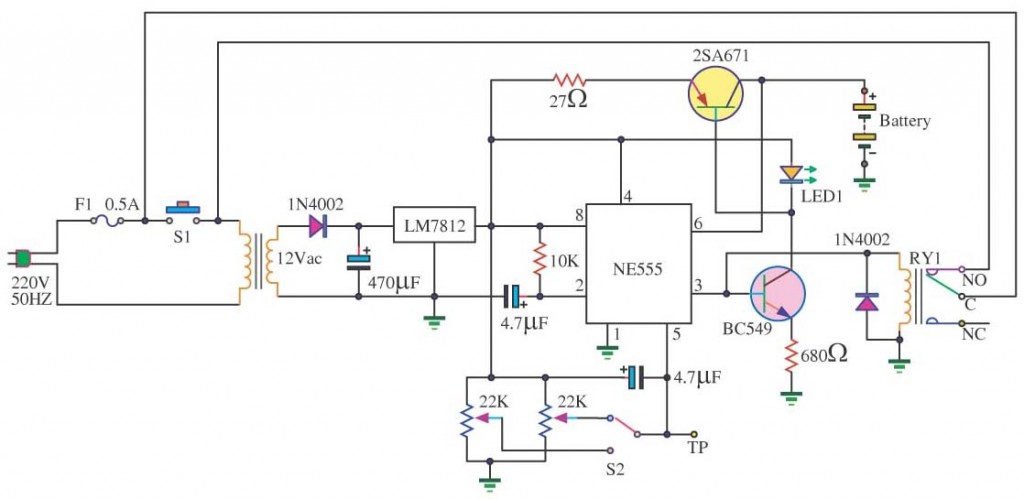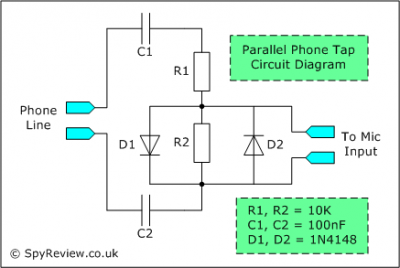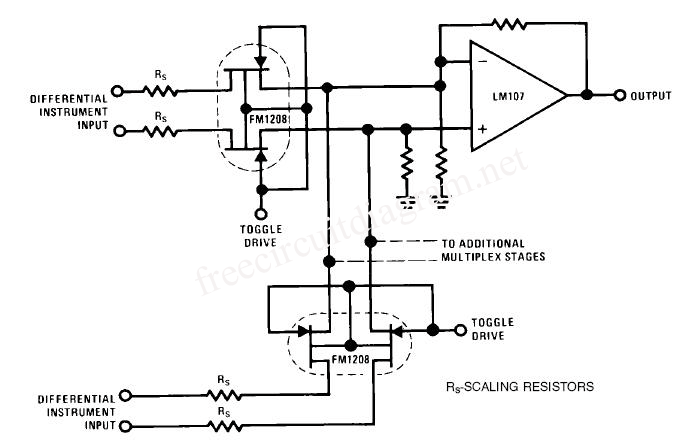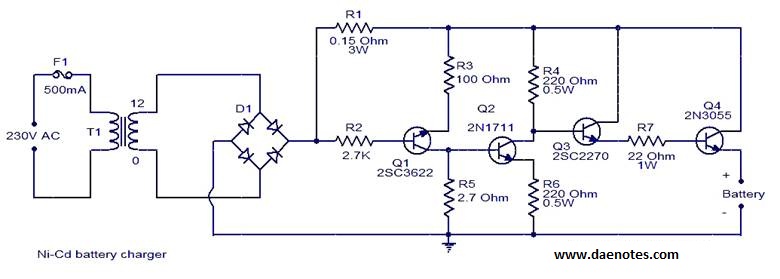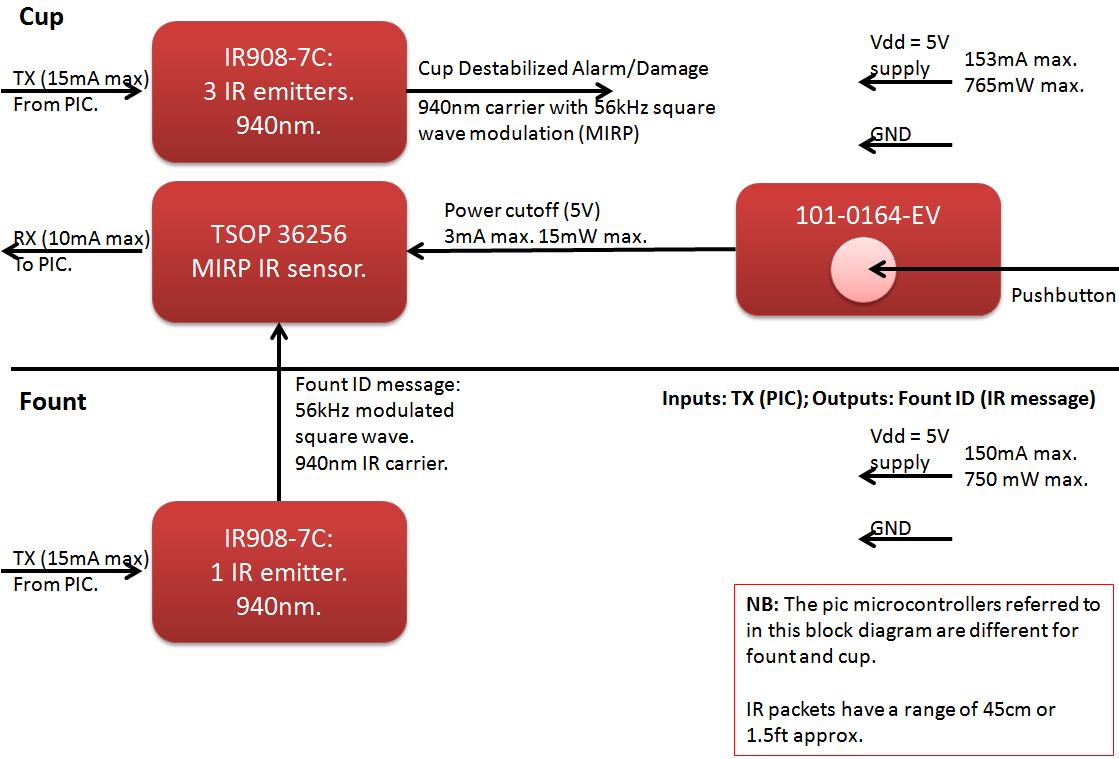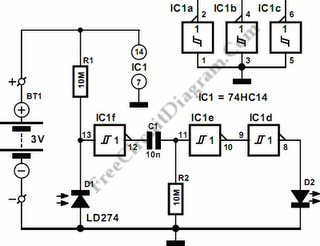
Tone Control Circuit
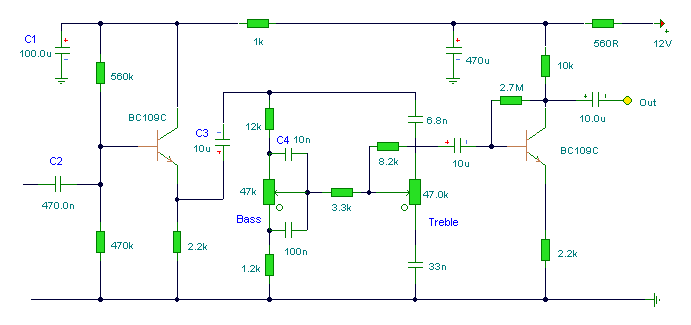
The first BC109C transistor (on the left side) functions as a buffer, offering the circuit a high input impedance of approximately 250k ohms and a voltage gain slightly less than unity. As the Baxandall tone control circuit is a passive design, it attenuates all audio frequencies. The positioning of the controls and the reactance of the capacitors modify the audio response. The final transistor delivers a modest boost of about 3 times. The output is intended to connect to an amplifier with an input impedance ranging from 10k to 250k ohms. Both tone control elements are specified as linear type potentiometers.
The circuit described utilizes a BC109C transistor as a buffer stage, which is critical for maintaining high input impedance while minimizing loading effects on the preceding circuit. The transistor's configuration ensures that it does not significantly alter the signal amplitude, providing a voltage gain that is nearly unity. This characteristic is essential for preserving the integrity of the audio signal as it passes through the tone control section.
The Baxandall tone control circuit is characterized by its passive nature, meaning that it does not provide gain but instead manipulates the frequency response of the audio signal. This manipulation occurs through the use of capacitors and potentiometers, which allow for adjustments in bass and treble frequencies. The reactance of the capacitors, in conjunction with the settings of the linear potentiometers, determines how different audio frequencies are attenuated or emphasized, resulting in a tailored audio output that suits user preferences.
The final transistor stage is designed to provide a slight amplification of the audio signal, with an approximate gain of 3 times. This gain is beneficial for ensuring that the output signal is sufficiently strong to drive an amplifier. The output stage of the circuit is intended to interface with amplifiers that have input impedances ranging from 10k to 250k ohms, which is a common specification for audio equipment. This compatibility ensures that the circuit can effectively drive a variety of amplifiers without signal degradation.
In conclusion, the described circuit effectively combines buffering, passive tone control, and amplification to create a versatile audio processing solution. The use of linear potentiometers for tone control allows for precise adjustments, while the careful selection of transistor stages ensures that the audio signal remains robust throughout the processing chain.The first BC109C transistor (left hand side) is acting as a buffer. It provides the circuit with a high input impedance, around 250k has a voltage gain of slightly less than unity. As the Baxendall tone control circuit is a passive design, all audio frequencies are attenuated. The position of the controls and reactance of the capacitors alters the audio response. The last transistor provides a slight boost of about 3x. The output is designed to feed an amplifier with input impedance of 10k to 250k. Both tone controls should be linear type potentiometers. 🔗 External reference
The circuit described utilizes a BC109C transistor as a buffer stage, which is critical for maintaining high input impedance while minimizing loading effects on the preceding circuit. The transistor's configuration ensures that it does not significantly alter the signal amplitude, providing a voltage gain that is nearly unity. This characteristic is essential for preserving the integrity of the audio signal as it passes through the tone control section.
The Baxandall tone control circuit is characterized by its passive nature, meaning that it does not provide gain but instead manipulates the frequency response of the audio signal. This manipulation occurs through the use of capacitors and potentiometers, which allow for adjustments in bass and treble frequencies. The reactance of the capacitors, in conjunction with the settings of the linear potentiometers, determines how different audio frequencies are attenuated or emphasized, resulting in a tailored audio output that suits user preferences.
The final transistor stage is designed to provide a slight amplification of the audio signal, with an approximate gain of 3 times. This gain is beneficial for ensuring that the output signal is sufficiently strong to drive an amplifier. The output stage of the circuit is intended to interface with amplifiers that have input impedances ranging from 10k to 250k ohms, which is a common specification for audio equipment. This compatibility ensures that the circuit can effectively drive a variety of amplifiers without signal degradation.
In conclusion, the described circuit effectively combines buffering, passive tone control, and amplification to create a versatile audio processing solution. The use of linear potentiometers for tone control allows for precise adjustments, while the careful selection of transistor stages ensures that the audio signal remains robust throughout the processing chain.The first BC109C transistor (left hand side) is acting as a buffer. It provides the circuit with a high input impedance, around 250k has a voltage gain of slightly less than unity. As the Baxendall tone control circuit is a passive design, all audio frequencies are attenuated. The position of the controls and reactance of the capacitors alters the audio response. The last transistor provides a slight boost of about 3x. The output is designed to feed an amplifier with input impedance of 10k to 250k. Both tone controls should be linear type potentiometers. 🔗 External reference
